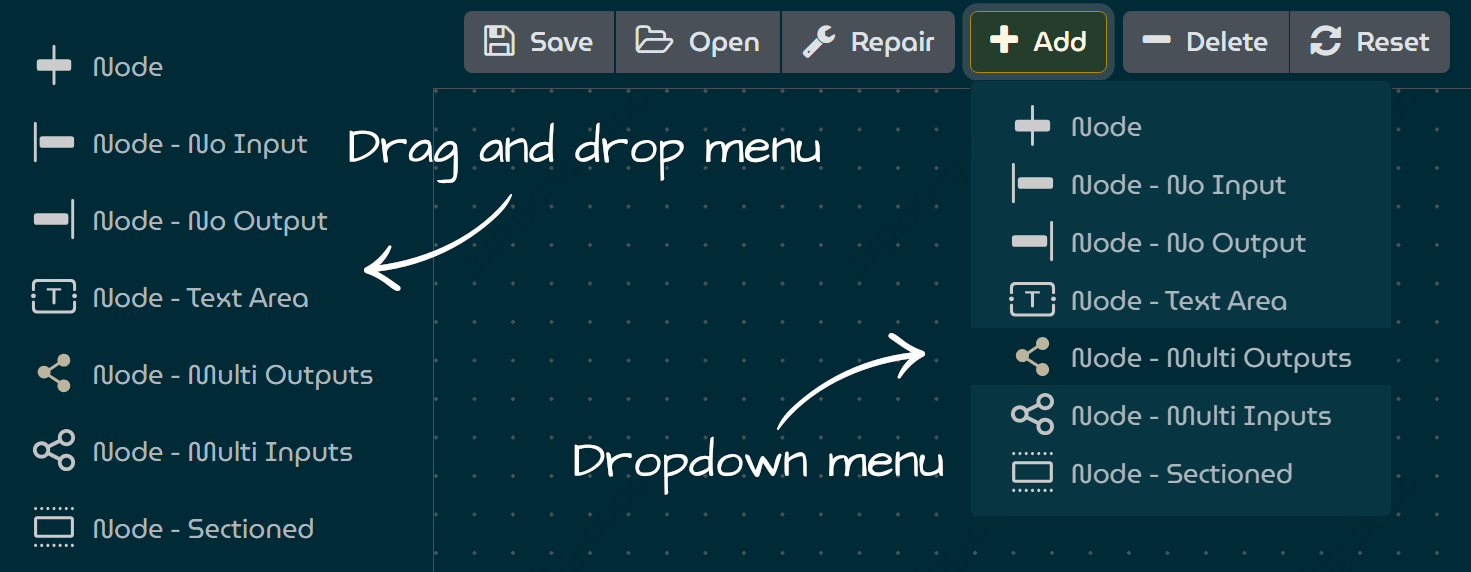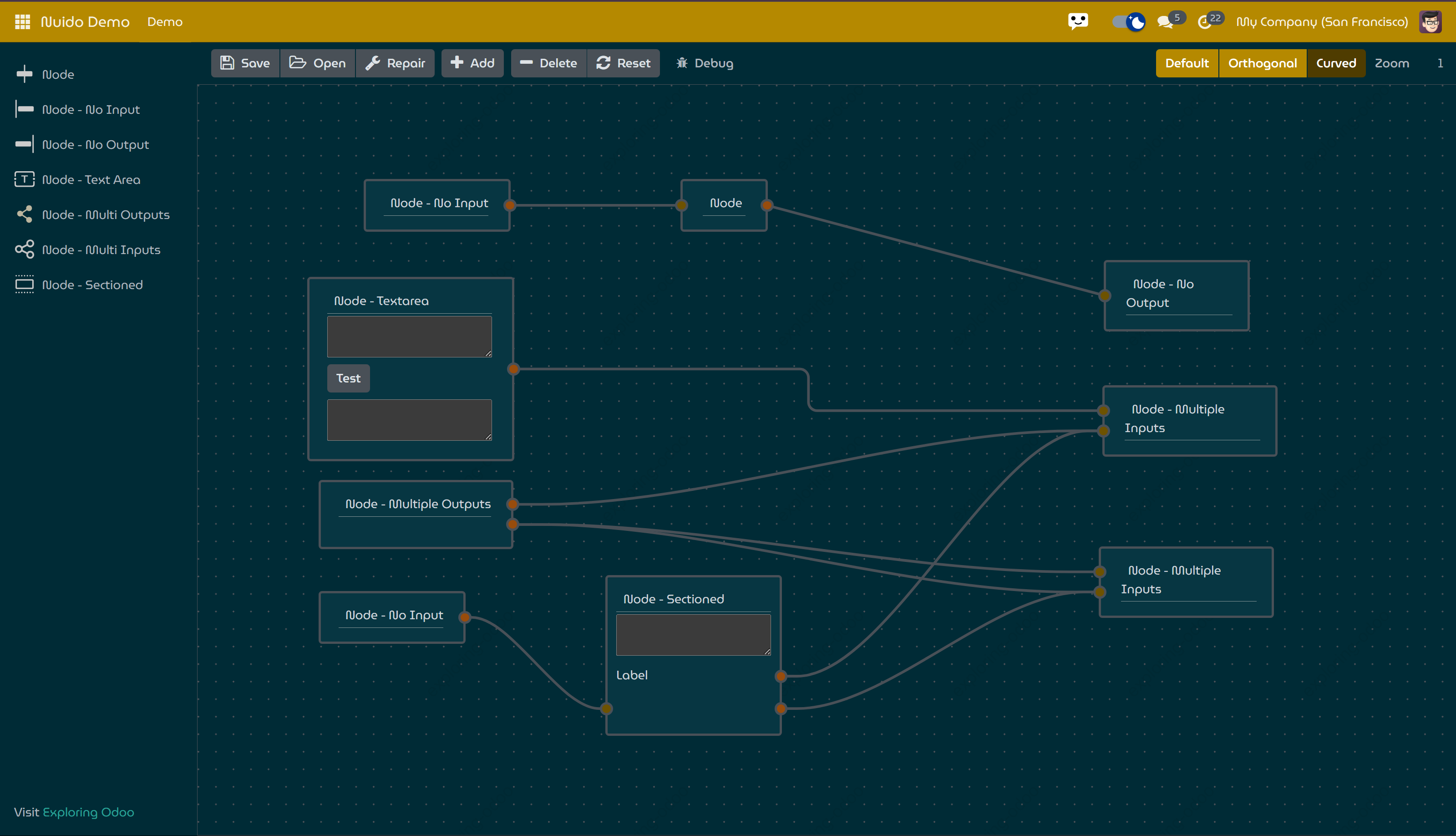Usage
Nuido offers two primary ways to integrate its UI functionality:
- Extend the
NuidoUicomponent and register it as client action. - Use
NuidoUias sub-component in a client action component.
In both approaches, the procedure for creating a node-based UI are similar.
Component Definition and Registration
Defining Nodes
To create a new node, define both the UI component and the model representing its logic and data.
js
export class DumbNode extends DemoNode {
static template = "nuido_demo.dumb-node";
// You can add sub-components or logic just like in any Owl component.
}
export class DumbNodeModel extends NodeModel {
setup(){
const inId = "in-" + this.id + "-1";
this.addInPort(inId, Default, 1);
const outId = "out-" + this.id + "-1";
this.addOutPort(outId, Default, 1);
}
}Since Nuido nodes are built on Owl, all Owl features are applicable. For example, you can define templates either inline or as external XML files.
xml
<t t-name="nuido_demo.dumb-node" t-inherit="nuido.node" t-inherit-mode="primary">
<xpath expr="//div[hasclass('node-content')]" position="replace">
<div class="node-content" t-att-style="contentStyle">
<!-- Custom content here -->
</div>
</xpath>
</t>Defining Edges
To create a custom visual connection between nodes, define new classes extending Edge and EdgeModel. Below is an example of a curved edge implementation.
js
export class DemoCurvedEdge extends Edge {}
export class CurvedPath extends PathModel {
// Adapted from https://stackoverflow.com/a/45245042
createPath(startX: number, startY: number, endX: number, endY: number): string {
// L
let BX = Math.abs(endX - startX) * 0.05 + startX;
let BY = startY;
// C
let CX = startX + Math.abs(endX - startX) * 0.33;
let CY = startY;
let DX = endX - Math.abs(endX - startX) * 0.33;
let DY = endY;
let EX = -Math.abs(endX - startX) * 0.05 + endX;
let EY = endY;
const svgPath = []
svgPath.push("M", startX, startY);
svgPath.push("L", BX, ",", BY);
svgPath.push("C", CX, ",", CY);
svgPath.push(DX, ",", DY);
svgPath.push(EX, ",", EY);
svgPath.push("L", endX, ",", endY);
const res = svgPath.join(" ");
return res;
}
svgPath(): string {
const res = this.createPath(
this.vprops.startX,
this.vprops.startY,
this.vprops.endX,
this.vprops.endY
);
return res;
}
}
export class DemoCurvedEdgeModel extends EdgeModel {
static get pathClass(): typeof PathModel {
return CurvedPath
}
}Interface to Create Nodes
The next step is to provide a way to add nodes to Nuido, for example you can provide a sidebar or a menu.

Menu Types Example
Demo App
For a full working example, refer to the Nuido Demo.

Nuido Demo

